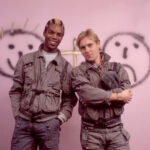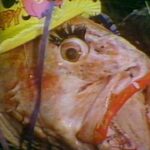 The NBA has seen its fair share of bad teams over the years, but no team in league history was worse than the 2011–12 Charlotte Bobcats. A franchise already struggling to establish itself, the Bobcats put together a season so disastrous that it redefined what it meant to be an inept basketball team. Finishing with a record of 7–59 and a winning percentage of .106, the Bobcats set a new standard for failure, earning the dubious distinction of having the worst single-season winning percentage in NBA history.
The NBA has seen its fair share of bad teams over the years, but no team in league history was worse than the 2011–12 Charlotte Bobcats. A franchise already struggling to establish itself, the Bobcats put together a season so disastrous that it redefined what it meant to be an inept basketball team. Finishing with a record of 7–59 and a winning percentage of .106, the Bobcats set a new standard for failure, earning the dubious distinction of having the worst single-season winning percentage in NBA history.
But what made this team so historically bad? Was it poor roster construction? Ineffective coaching? A front office with no direction? The reality is that it was a perfect storm of all these factors—and more. In this article, we’ll take a deep dive into the disaster that was the 2011–12 Charlotte Bobcats, exploring the key reasons for their failures, the legacy they left behind, and how they managed to become the worst team the NBA has ever seen.
Setting the Stage: The Bobcats Before 2011–12
Before diving into the infamous 2011–12 season, it’s important to understand the state of the Charlotte Bobcats leading up to that year. The franchise had been founded in 2004 as an expansion team, replacing the Charlotte Hornets, who had relocated to New Orleans in 2002. From the beginning, the Bobcats struggled to gain traction, suffering through multiple losing seasons with few bright spots.
Under the ownership of Michael Jordan, the team had made the playoffs for the first time in franchise history during the 2009–10 season. That team, led by defensive-minded coach Larry Brown and anchored by veterans like Stephen Jackson, Gerald Wallace, and Raymond Felton, managed to finish with a 44–38 record before getting swept in the first round by the Orlando Magic.
However, instead of building on that success, the Bobcats quickly dismantled their roster. Wallace was traded to Portland, Jackson was sent to Milwaukee, and Felton signed elsewhere. The team had no direction, no identity, and no stars.
Heading into the 2011–12 season, expectations were already low, but no one expected the level of incompetence that would follow.
The 2011–12 Roster: A Recipe for Disaster
No Star Power
One of the biggest reasons the Bobcats were historically bad was their complete lack of star talent. Their leading scorer? Gerald Henderson, who averaged just 15.1 points per game. No player on the roster was a legitimate go-to option, and there were no All-Stars or rising young talents to build around.
The Starting Lineup
- Kemba Walker (PG) – A rookie struggling to adjust to the NBA.
- Gerald Henderson (SG) – A solid defender but far from a No. 1 option.
- Corey Maggette (SF) – A veteran known for getting to the free-throw line but not much else.
- Tyrus Thomas (PF) – A massive disappointment who failed to live up to his potential.
- Bismack Biyombo (C) – A raw, unpolished rookie with almost no offensive skills.
Off the bench, the Bobcats relied on players like D.J. Augustin, Byron Mullens, Reggie Williams, and Derrick Brown—a collection of role players and fringe NBA talent who would struggle to get minutes on most rosters.
Lack of Leadership
There was no clear leader on this team. Maggette was the closest thing they had to a veteran presence, but he missed over half the season due to injuries. Kemba Walker, despite being the most promising player on the roster, was a rookie point guard forced into a leadership role far too soon.
Without strong veteran leadership, the team lacked accountability, direction, and motivation.
Coaching Woes: Paul Silas and the Struggles of a Lost Team
Paul Silas’ Final Season
The Bobcats were coached by Paul Silas, a veteran NBA coach who had previously found success with the Charlotte Hornets and Cleveland Cavaliers. However, by the 2011–12 season, Silas was past his prime as a coach and was not the right fit for a team in desperate need of structure and development.
Silas was known for being a players’ coach, but this team needed a disciplinarian who could hold players accountable and instill a winning culture. Instead, the Bobcats played uninspired, sloppy basketball, frequently getting blown out by large margins.
To make matters worse, Silas often seemed disengaged and frustrated, publicly calling out players and struggling to find consistent rotations.
The Assistant Coaching Staff
There wasn’t much help from the assistant coaching staff either. Stephen Silas, Paul’s son, was an assistant, but he was still relatively inexperienced at the time. The team lacked strong player development coaches, which meant that young players like Kemba Walker and Bismack Biyombo were not improving at the rate they needed to.
The Lockout-Shortened Season: A Compressed Nightmare
The 2011–12 NBA season was shortened to 66 games due to a lockout, which meant a condensed schedule with fewer practices and less time for young teams to develop chemistry. For a team as bad as the Bobcats, this was catastrophic.
- Back-to-back games exposed their lack of depth.
- Minimal practice time hurt their young players’ development.
- The lack of preseason meant they never established a rhythm.
As the season progressed, things only got worse. Injuries piled up, morale plummeted, and by April, the team had all but given up.
The Stats: Proof of Incompetence
Numbers don’t lie, and the stats from the 2011–12 Bobcats season paint a horrifying picture:
- Record: 7–59 (.106 winning percentage) – the worst in NBA history.
- Point Differential: -13.9 per game (worst in the NBA that season).
- Offensive Rating: 92.3 (ranked 30th out of 30 teams).
- Defensive Rating: 108.9 (ranked 30th out of 30 teams).
- Field Goal Percentage: 41.4% (worst in the league).
- Opponent Field Goal Percentage: 47.5% (second-worst in the league).
Simply put, they were the worst offensive team and one of the worst defensive teams at the same time. That is a historically bad combination.
The Losing Streaks: Rock Bottom Moments
The Bobcats’ season was filled with humiliating losses, but these were the worst:
- 26-Game Losing Streak to End the Season – The Bobcats didn’t win a single game after March 17.
- Lost by 36 Points to the Thunder (April 16, 2012) – Kevin Durant and Russell Westbrook annihilated them.
- Lost by 31 Points to the Celtics (April 15, 2012) – A veteran Celtics team barely broke a sweat.
- Lost by 30 Points to the Wizards (April 9, 2012) – Losing to a bad Wizards team by 30 was a new low.
The Fallout: The Draft Lottery Disaster
After suffering through the worst season in NBA history, Bobcats fans were at least hoping for a reward in the 2012 NBA Draft. The team had the best odds to land the No. 1 pick and the chance to draft Anthony Davis, a franchise-changing superstar.
But in classic Bobcats fashion, they lost the lottery. The New Orleans Hornets (ironically, the team that once left Charlotte) won the No. 1 pick, and the Bobcats were stuck with the No. 2 selection.
Instead of Davis, they drafted Michael Kidd-Gilchrist, a defensive-minded forward who never developed an offensive game. While MKG had a decent career, he was nowhere near the franchise player the Bobcats desperately needed.
Conclusion: The Worst of the Worst
The 2011–12 Charlotte Bobcats weren’t just bad—they were historically inept. They lacked talent, leadership, coaching, and direction, leading to the worst winning percentage in NBA history. While the team eventually rebranded as the Charlotte Hornets and improved in later years, this disastrous season remains a stain on the franchise’s history.
For NBA fans, the Bobcats serve as the ultimate example of how not to build a team—and why no one wants to break their infamous record.
This post has already been read 81 times!









